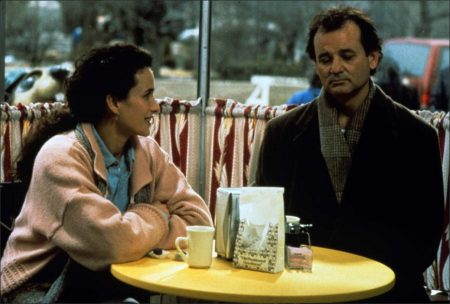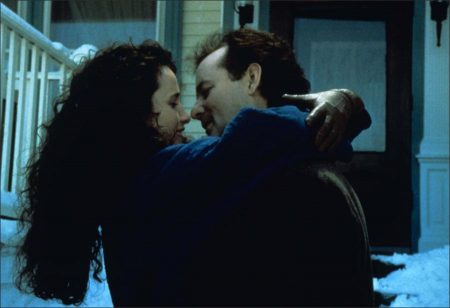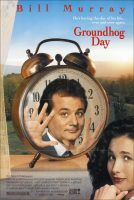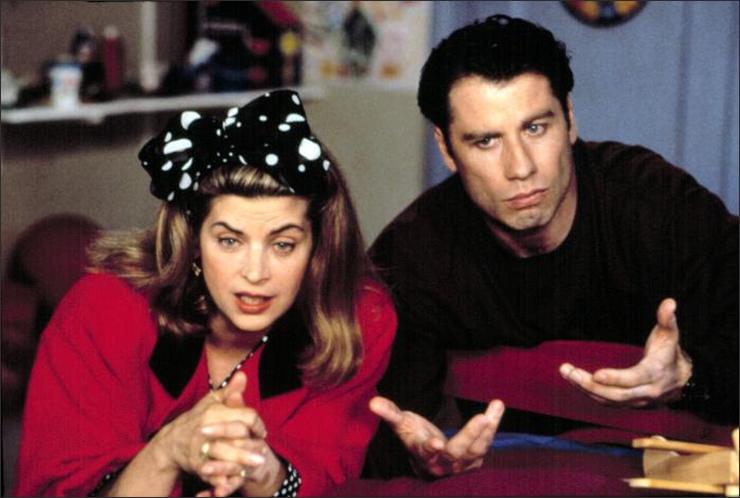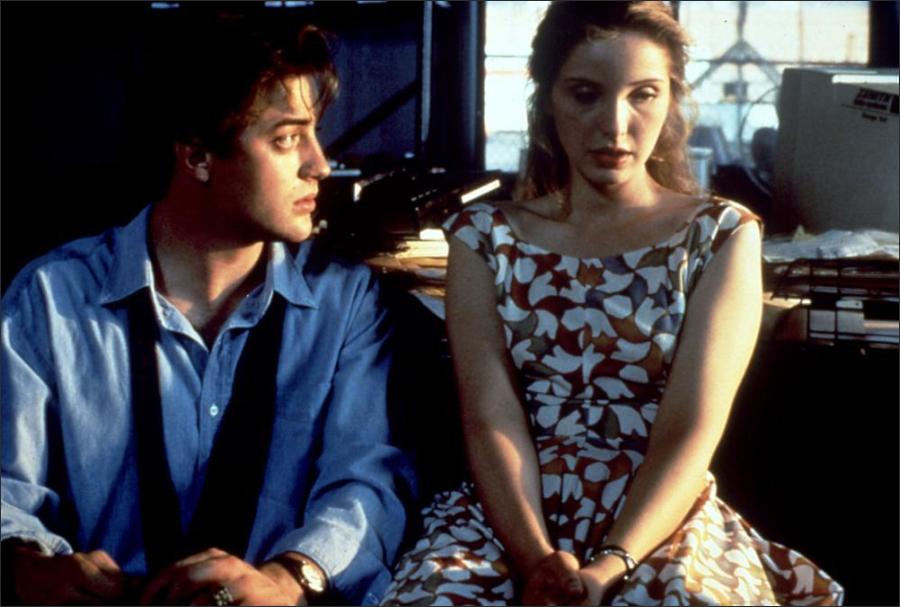Taglines: He’s having the worst day of his life… over, and over…
Groundhog Day movie storyline. A weather man is reluctantly sent to cover a story about a weather forecasting “rat” (as he calls it). This is his fourth year on the story, and he makes no effort to hide his frustration. On awaking the ‘following’ day he discovers that it’s Groundhog Day again, and again, and again. First he uses this to his advantage, then comes the realisation that he is doomed to spend the rest of eternity in the same place, seeing the same people do the same thing EVERY day.
Groundhog Day is a 1993 American fantasy-comedy film directed by Harold Ramis, starring Bill Murray, Andie MacDowell, and Chris Elliott. It was written by Ramis and Danny Rubin, based on a story by Rubin. Murray plays Phil Connors, an arrogant Pittsburgh TV weatherman who, during an assignment covering the annual Groundhog Day event in Punxsutawney, Pennsylvania, finds himself caught in a time loop, repeating the same day again and again. After indulging in hedonism and committing suicide numerous times, he begins to re-examine his life and priorities.
On its release, Groundhog Day was a modest success and garnered generally positive reviews. It gained stronger appreciation among critics and film historians over time, and is now often listed among the best comedy films ever. It further entered into the public consciousness, where the term “Groundhog Day” can represent a situation that seems to repeat over and over in government and military arenas, as well as influencing other entertainment. In 2006, the film was added to the United States National Film Registry as being deemed “culturally, historically, or aesthetically significant”.
Film Review for Groundhog Day
In “Groundhog Day,” playing a formerly smug weatherman who finds himself condemned to relive one Feb. 2 over and over again in Punxsutawney, Pa., Bill Murray explains his feelings to two bleary-eyed, beer-drinking locals. “What would you do if you were stuck in one place and everything was exactly the same and nothing that you did mattered?” he asks despairingly. The two strangers listen very sympathetically. They didn’t have to be trapped by a magic spell to know what he means.
That glimmer of recognition is what makes “Groundhog Day” a particularly witty and resonant comedy, even when its jokes are more apt to prompt gentle giggles than rolling in the aisles. The story’s premise, conceived as a sitcom-style visit to the Twilight Zone, starts out lightweight but becomes strangely affecting. Phil Connors, Mr. Murray’s amusingly rude Pittsburgh television personality, surely deserves to be punished for his arrogance. But who in the audience hasn’t ever wished time would stand still and offer a second, third or even a 20th chance?
The jaded Phil, a perfect character for Mr. Murray, begins the story sounding terminally smooth. He refers to himself as “talent,” and addresses a fellow newscaster as “Hairdo.” He sneers at Punxsutawney and is contemptuous of his own charming producer (Andie MacDowell) and darkly funny cameraman (Chris Elliott). He even delivers pleasant-sounding insults to the proprietors of the bed-and-breakfast where he is staying, not realizing he may be staying there forever.
As directed breezily by Harold Ramis (who wrote the screenplay with Danny Rubin), “Groundhog Day” employs the sort of time-bending trickery that worked so well for “Back to the Future.” Thus, Phil finds himself revisiting the recent past and coming face to face with people not fully aware of his special powers.
On the first Feb. 2, he is cheerfully odious to everyone he meets, including an insurance salesman named Ned (Stephen Tobolowsky, hilarious as the quintessential pest). But as time goes by — or doesn’t — Phil begins to try out different gambits, testing the limits of his plight. He learns that he can do nothing bad enough to keep himself from waking up under the same flowered quilt, listening to Sonny and Cher sing “I Got You, Babe” on the clock radio at 6 A.M. Not even smashing the radio to bits will make them shut up.
Wildly frustrated at first, Phil gradually begins to treat his plight as a learning experience. He can, for instance, take enough piano lessons to impress Ms. MacDowell’s enchanting Rita, once he realizes how wrong he was to treat her badly. One of the film’s many repetitive sequences shows Phil on a date with Rita, learning so much about her that he can begin sounding like a mind reader and passing himself off as the perfect mate. “You couldn’t plan a day like this!” Rita finally sighs happily. “Well, you can,” says Phil. “It just takes an awful lot of work.”
The film makes the most of the sentimental possibilities in Phil’s rehabilitation. (Viewers who notice Phil ignoring a panhandler on his first Groundhog Day will surely know where that setup is headed.) But it also has fun with the nihilism. Phil eagerly explores every self-destructive possibility now open to him, from jumping off buildings to smoking cigarettes to overeating and refusing to floss; at one point he even casually robs an armored truck, just to see if he can. “Well, what if there is no tomorrow?” he anxiously asks someone. “There wasn’t one today!”
Mr. Murray is back in top form with a clever, varied role that draws upon the full range of his talents. As in “Scrooged,” he makes a transition from supreme cynic to nice guy, and this time he does so with particularly good grace. Half Capra and half Kafka, the story of “Groundhog Day” presents golden opportunities, particularly in the gently romantic scenes with Ms. MacDowell.
Mr. Murray is as believable and appealing at these moments as he is flinging insults. Ms. MacDowell, a warm comic presence and a thorough delight, plays a modern working woman while also reminding viewers that this is at heart a fairy tale. As Phil tries one desperate tactic after another, fairy tale fans will be way ahead of him, knowing what it takes to break a spell.
Groundhog Day (1993)
Directed by: Harold Ramis
Starring: Bill Murray, Andie MacDowell, Chris Elliott, Stephen Tobolowsky, Brian Doyle-Murray, Marita Geraghty, Angela Paton, Rick Overton, Robin Duke
Screenplay by: Danny Rubin, Harold Ramis
Production Design by: David Nichols
Cinematography by: John Bailey
Film Editing by: Pembroke J. Herring
Costume Design by: Jennifer Butler
Set Decoration by: Lisa Fischer
Art Direction by: Peter Landsdown Smith
Music by: George Fenton
MPAA Rating: PG for some thematic elements.
Distributed by: Columbia Pictures
Release Date: February 12, 1993
Views: 157

